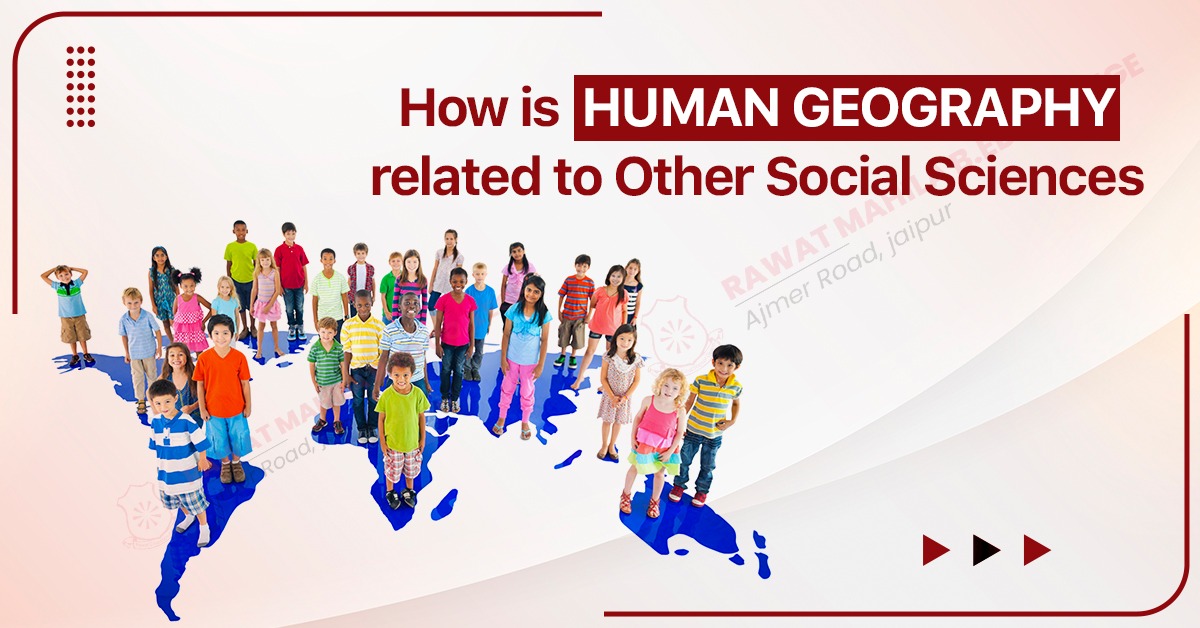How is Human Geography Related to Other Social Sciences

Human geography studies the spatial distribution and interaction of human beings, their societies, cultures, and economic activities. It focuses on understanding how people interact with their environment, how they create and sustain communities and cultural practices, and how they shape the places and spaces in which they live. Human geography covers many topics, including population distribution and migration patterns, urbanization, economic development, cultural and social practices, and the relationship between humans and the natural environment. Human geographers use various research methods, including fieldwork, surveys, remote sensing, and GIS mapping, to explore the complex relationships between people, places, and environments.
Sub-Fields of Human Geography:
Human geography is a broad field of study that encompasses a variety of subfields, each with its own focus and methods of analysis. Some of the major subfields of human geography include:
- Cultural Geography: Cultural geography is the study of the spatial distribution of cultural practices, beliefs, and values, as well as their impact on the physical and social environment. This subfield focuses on understanding how different cultures shape and are shaped by their environment, and how cultural practices and beliefs can affect social and environmental outcomes. Some examples of topics that cultural geographers might study include the spread of cultural practices and ideas, the formation of cultural landscapes, the impact of cultural values on land use, and the role of culture in shaping social inequality.
- Economic Geography: Economic geography is the study of the spatial distribution of economic activities, such as production, trade, and consumption, and the ways in which these activities shape and are shaped by the environment. This subfield focuses on understanding the economic processes and systems that operate within and between regions, and how economic activities can impact social and environmental outcomes. Some examples of topics that economic geographers might study include the spatial distribution of industries and businesses, the formation of economic networks and clusters, the impact of globalization on local economies, and the role of the environment in shaping economic development.
- Political Geography: Political geography is the study of the spatial distribution of political power, including the ways in which it is exercised, contested, and negotiated at local, national, and global levels. This subfield focuses on understanding how political systems and institutions are shaped by and in turn shape the physical and social environment. Some examples of topics that political geographers might study include the spatial distribution of political parties and interest groups, the impact of political borders on migration and trade, the role of political power in shaping urban and regional development, and the impact of international politics on environmental policy.
- Urban Geography: Urban geography is the study of the spatial organization and dynamics of cities and urban areas, including issues related to urbanization, urban planning, and the social and cultural life of cities. This subfield focuses on understanding the processes and structures that shape the physical and social fabric of urban areas, and how urban areas can impact social and environmental outcomes. Some examples of topics that urban geographers might study include the impact of urban sprawl on environmental quality, the formation of urban social and cultural identities, the role of transportation in shaping urban form, and the impact of urban planning policies on social and economic outcomes.
- Environmental Geography: Environmental geography is the study of the interactions between human beings and the natural environment, including issues related to climate change, natural resource management, and sustainability. This subfield focuses on understanding the complex relationships between human societies and the environment, and how these relationships can impact social, economic, and environmental outcomes. Some examples of topics that environmental geographers might study include the impact of climate change on human societies, the management of natural resources such as water and forests, the development of sustainable energy systems, and the impact of environmental policies on social and economic outcomes.
- Geographical information science (GIScience): This subfield focuses on the development and application of advanced mapping and data analysis technologies to better understand spatial relationships and patterns in human geography.
Other subfields of human geography include medical geography, feminist geography, historical geography, and population geography, among others.
Human Geography and Social Science Relation:
Human geography is a social science that studies the spatial distribution and interaction of people, cultures, and economic activities. As a social science, human geography is related to other social sciences in a number of ways, including:
- Anthropology: Anthropology and human geography both study human societies and cultures, but anthropologists tend to focus more on the cultural and social aspects of human behavior, while human geographers tend to focus more on the spatial and environmental aspects.
- Sociology: Sociology and human geography both study human behavior, but sociology tends to focus more on social structures and institutions, while human geography tends to focus more on the spatial and environmental factors that shape human behavior.
- Economics: Economics and human geography both study economic activities, but economics tends to focus more on the behavior of markets and the allocation of resources, while human geography tends to focus more on the spatial distribution of economic activities and the impact of the environment on economic development.
- Political Science: Political science and human geography both study political systems, but political science tends to focus more on the structure and functioning of political institutions, while human geography tends to focus more on the spatial distribution of political power and the impact of the environment on political outcomes.
Read also: Why is Sleep Important for College Students
Conclusion:
In conclusion, human geography is a broad and interdisciplinary field of study that focuses on understanding the spatial distribution and interaction of human beings, their societies, cultures, economic activities, and the natural environment. It draws on insights from other social sciences and natural sciences to develop a comprehensive understanding of the complex relationships between humans and their environment.
Human geography contributes to society by providing insights into a wide range of social and environmental challenges, such as climate change, urbanization, economic development, political power, and cultural diversity. It helps policymakers and other stakeholders develop effective strategies and solutions for addressing these challenges, as well as providing a deeper understanding of the social and environmental consequences of their decisions. Furthermore, human geography also provides individuals with a greater appreciation of the diversity of the world and the interconnections between different societies and cultures. By promoting greater awareness and understanding of these issues, human geography contributes to a more sustainable, equitable, and prosperous world.



